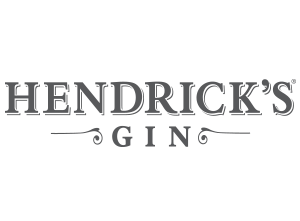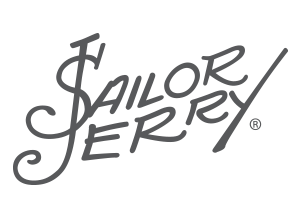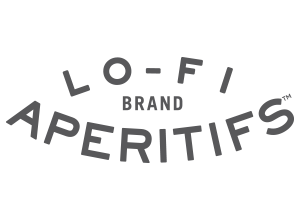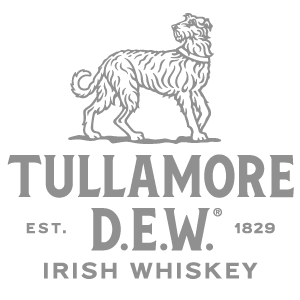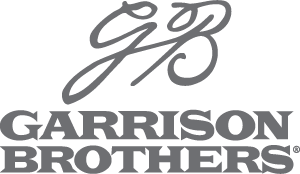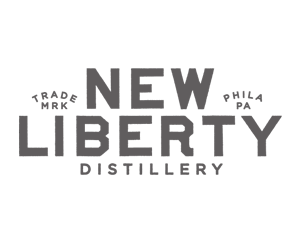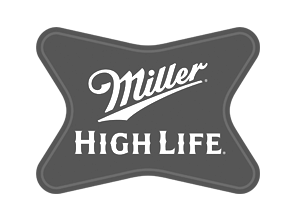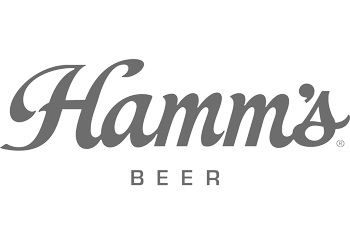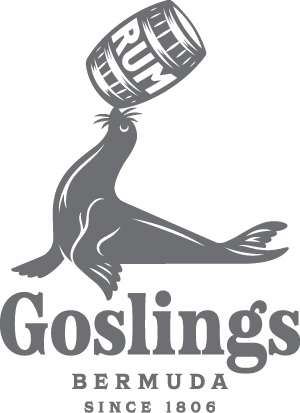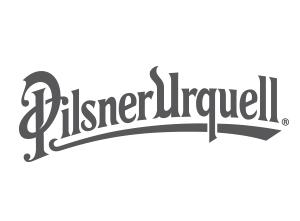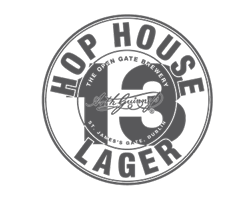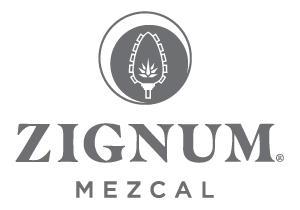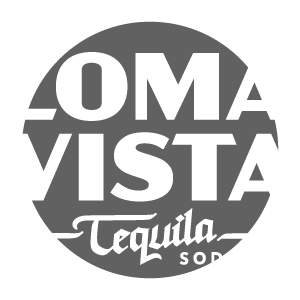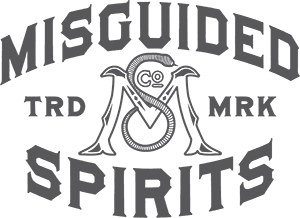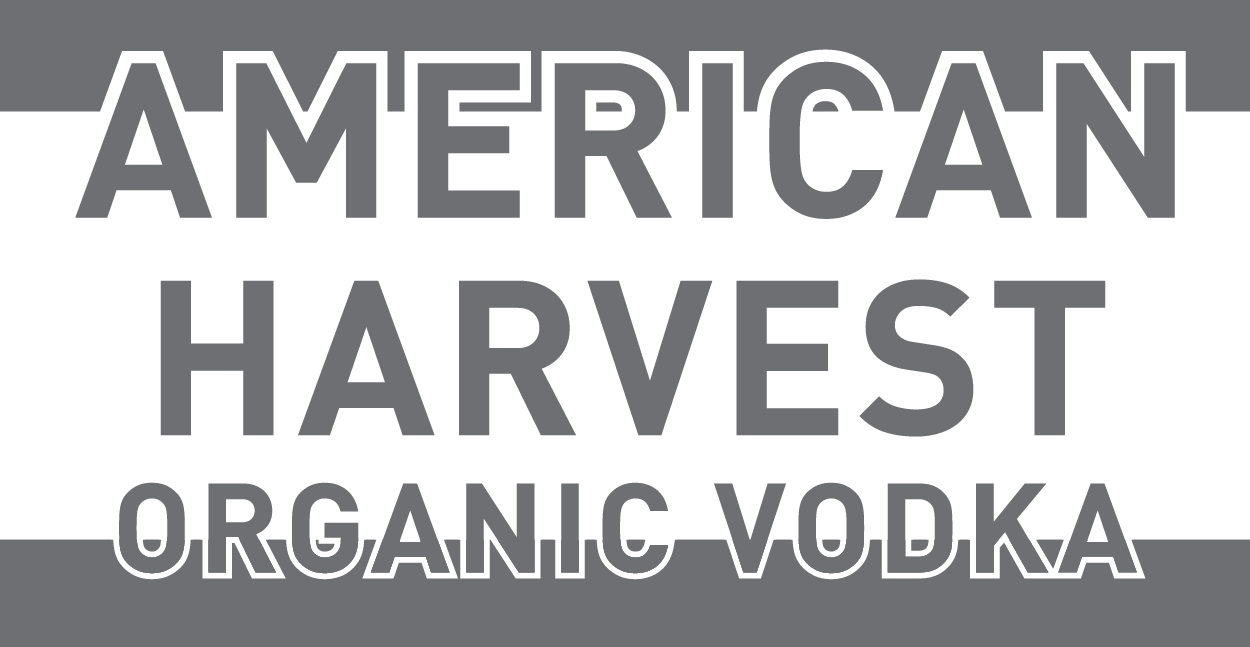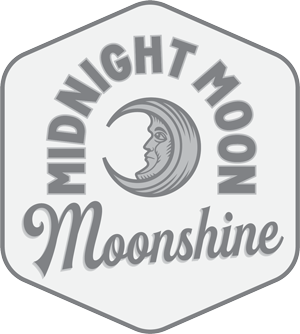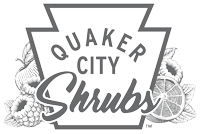The problem was not Woody Hambrecht’s vermouth.
The Healdsburg winemaker had begun making vermouth in 2013, partly as a way to keep himself and his winery, Alysian, busy during the off-season. His vermouths were excellent; I recommended Alysian’s bittersweet bianco in a 2017 article. But business was tough. The conventional sales strategy of selling to cocktail bars seemed like a dead end. The Alysian vermouths “would end up being a tiny component in a cocktail, at best,” says Woody’s wife, Helena Price Hambrecht. “And the drinker had no idea what Alysian was.”
A few years later, Hambrecht is still making vermouth — but this time business is very, very good. In 2019, having abandoned Alysian, the Hambrechts launched a new brand called Haus, and its dulled-color, 1970s-esque marketing images of glass-in-hand young people saturated the internet seemingly overnight. It is the rare alcohol brand that channels what’s been called the Millennial aesthetic: a ceramic bottle, serif fonts. Haus’ sales surged 800% during 2020, Price Hambrecht says, and in December alone generated revenue “in the seven figures.”
The catch: This time, the Hambrechts aren’t calling their product vermouth. Instead, they’re using its alluring, Francophone synonym — aperitif.
To be clear, the word “aperitif” is not solely responsible for Haus’ success, but the terminology shift is indicative of a larger phenomenon, an aperitif explosion. We are living through an era that revels in all things aperitif-adjacent: spritzes, botanicals, low-proof cocktails, happy hours. And now, through Bay Area brands like Haus, Mommenpop, Jardesca, Lo-Fi and Ortolan Rosolio, the aperitif umbrella is giving new life to alcohol categories, especially vermouth, that have long languished in the unpopular shadows.
Legally, vermouth and aperitifs are synonyms, used interchangeably by the Alcohol and Tobacco Tax and Trade Bureau. They are a type of wine — an aromatized wine, to be precise. To make these products, wine is fortified (usually with neutral grape brandy), then infused with any manner of herbs, spices, fruits and barks. A hallmark of traditional French aperitifs like Suze and Italian aperitivos like Campari is a strong bitterness, often due to additions of wormwood or quinine.
The new wave of California aperitifs don’t always follow the tradition faithfully. Many of them eschew bitterness in favor of bright fruitiness, and they convey a sense of place by showcasing distinctly Californian citrus, flowers and other flavorful plants.

Besides, the term aperitif has taken on a meaning that transcends its technical definition. It’s a feeling, it’s a moment. In France, they call the ritual l’apero; in Italy, aperitivo. “Aperitivo hour is really this pause between your everyday life and your social life, the preamble to a great evening,” says Roger Morrison, co-founder of the Sonoma County brand Jardesca Aperitiva. Sipping a bitter, low-alcohol drink before dinner, the logic goes, helps to whet the appetite.
This European ritual experienced a full-force revival in the U.S. in recent years, all thanks to a single Italian import: Aperol.
The bittersweet aperitivo and its signature cocktail, the Aperol spritz, went viral around five years ago. (Turns out an aggressive advertising campaign had something to do with that.) Bright orange, lightly sweet and bubbling over with Prosecco, the Aperol spritz quickly replaced Whispering Angel rosé as the requisite arm candy at Hamptons summer parties.
Eight years ago, when Morrison and co-founder Marshall Dawson were launching Jardesca, it seemed to them that none of their customers were familiar with the French and Italian aperitif traditions. Few customers even knew the word aperitif. Today it’s a different world. “We now have people coming up to us when we do events saying, ‘I’ve been looking for a new aperitif,’” Dawson says. “The first time that happened I thought they were yanking our chains.”

Napa winemaker Samantha Sheehan was one of the many breezy Millennials who found herself caught up in the Aperol spritz craze, drinking the cocktails almost nightly during the summer of 2015. But after she ran lab tests that suggested that Aperol contained a half-pound of sugar per liter, Sheehan decided to make a less sugary version herself by extracting Seville oranges into Chardonnay.
When Sheehan got ready to bottle her citrusy creation, in 2016, the federal alcohol taxing bureau gave her the choice of labeling it as either a vermouth or aperitif. “At the time, vermouth sounded more familiar to me, so I went with that,” she says. Sheehan subsequently named her project Mommenpop and added two more flavors, grapefruit and blood orange.
But after five years of exhaustively trying to explain vermouth to her customers — a task “like pushing a boulder up a hill,” she says — Sheehan abandoned the terminology. In August, she started labeling the new Mommenpop bottles as aperitifs. Already she’s found them much easier to sell.
“People just think of vermouth as these old bottles of Dolin on their grandparents’ bar cart,” Sheehan says. Apart from its role in a martini or a manhattan, the uses of vermouth remain confusingly vague to most drinkers. Is it dry? Is it sweet? Is it a before-dinner drink? An after-dinner drink? Can you sip it on its own? (The answer to all those questions: yes.)
That the branding around the drink has changed sales is a major part of the equation. The packaging of these aperitifs is designed to pop on the shelf or on an Instagram feed. The Mommenpop labels are bold, resembling citrus segments. They don’t look like wine bottles, and they look not at all akin to the busy, baroque looks of traditional vermouths like Carpano or Dolin. (The Mommenpop labels are the work of Michael McDermott, a prolific wine-label designer who is married to Sheehan.)
Whereas the archetypal Wine Country brand might showcase photos of sunrises over vineyards and winemakers in dirt-caked Blundstone boots, the aesthetic realm of Haus is urban and loungey, featuring models in turtlenecks and high-waisted jeans. “We’re not making this for the Wine Country patron,” says Price Hambrecht, who lives in Healdsburg. (When asked if Haus might ever open a tasting room, she says it’s likely, and it would be in Los Angeles or San Francisco.)
Haus has cracked Instagram in a way that’s remained elusive to the larger California wine industry, featuring on its feed styled photos of influencers from a natural-dye textile artisan to “Silicon Valley” actor Amanda Crew. “We have not come close to hitting a ceiling on paid marketing,” Price Hambrecht says of their social-media advertising strategy.
The wording is important, too. Vermouth is an ugly, harsh word, derived from the German for “wormwood,” which might be even uglier and harsher. Aperitif, by contrast, is sexy and soft, a derivative of the French for “open.” How lovely.
Even some of the stalwart vermouth artisans are realizing the power of the word aperitif. “I wish I would have had the foresight to take advantage of the (aperitif) categorization back in 2011 when I started,” says Napa winemaker Dan Petroski, who makes delicious, Italian-inspired vermouths under his Massican label but says he still struggles to sell them.
Aperol and minimalist labels alone, though, don’t take all the credit for the aperitif boom. As the market for lower-proof booze has grown in recent years, the aperitif’s ability to render a sessionable cocktail has been advantageous. The aperitif companies have capitalized on that interest in wellness-oriented drinking, explicitly marketing their products as less likely to induce a hangover than boozy cocktails.
“Aperitifs are the original better-for-you alcohol,” says Haus’ Price Hambrecht. She’s referring to their historical origins: Because they contained quinine, which could treat malaria, aperitifs were administered in the 19th century as medicine.

It’s true that aperitifs tend to be significantly lower in alcohol than hard liquor, and a spritz (typically composed of aperitif + sparkling wine + sparkling water) packs a much lower punch than a whiskey or gin tipple. However, aperitifs are by definition higher in alcohol than table wine, since they are fortified wines. For example, Haus’ products clock in at 18%, Mommenpop’s at 17% and Jardesca’s at 17%, a few notches higher than the 12%-14% range you’d find in most California wines.
But table wines aren’t the right comparison; these aperitifs behave more like cocktails, already jazzed up with all their herb, fruit and spice additions. Some of the Haus flavors, in fact, feel inspired by standard cocktails: Its peach passionfruit flavor recalls a tiki drink, its spiced cherry aperitif like a lighter Manhattan. Mommenpop’s grapefruit aperitif tastes like a paloma.
Vermouth producers are not the only ones who have capitalized on the aperitif’s allure. Now, the term has been adopted for beverages that would never have actually counted as an aperitif in the technical sense.
Locally, perhaps the most interesting aperitif-that’s-not-an-aperitif is Ortolan Rosolio, made by East Bay resident Robert Collier. It’s modeled on rosolio, an esoteric type of Italian liqueur that was typically flavored with fennel, bergamot or carob but fell out of fashion by the early 20th century. Collier’s main ingredient is heirloom rose petals from a farm in Santa Barbara, resulting in an amazingly fragrant floral liqueur (that doesn’t, thank goodness, taste like a Crabtree & Evelyn store).
Collier wasn’t fooling himself that customers could ever latch on to “rosolio,” though. “Even Italians don’t know what a rosolio is,” he says. “So the easiest way I have of explaining it is to say it’s an aperitivo or aperitif.”
What unites these Bay Area creations, whatever you want to call them, is not a process but a mood. They’re light, fruity and sunny, a contrast to their bitter, more serious-feeling European counterparts. If the term aperitif has become less precise, it’s also become more evocative, channeling the spirit of that sacred aperitivo hour.
“Sure, it would have been nice to reinvent vermouth, if I’d had a $600 million marketing budget,” says Sheehan. “But aperitif feels nice. It feels like a blank slate.”

Tasting notes
You may be familiar with Lillet and Aperol, but there’s a whole new generation of aperitifs available today, and many of the best are made in the Bay Area. The nomenclature can get confusing: Most of the products on this list are technically vermouth, a type of aromatized and fortified wine, though there are some other categories of liqueurs represented too (including one that’s made from rose petals). All of them are welcome under the inclusive and enticing aperitif umbrella.
Before you break out the cocktail shaker, be sure to try a taste of these aperitifs neat or on the rocks — some of them taste like complete cocktails on their own. And while many of them would be delicious mixed with harder liquor — the negroni-like possibilities here are endless — we’ve provided some low-proof, spritzy suggestions for what to do with each of them, using simple mixers like soda water and sparkling wine. If you want to get creative without adding too much more alcohol, you will find that garnishes of fresh herbs (try slapping a sprig between your hands over the glass before dropping it in) and citrus (make sure to really twist the peel over the glass in order to express its oils) go a very long way.

• Mommenpop blood orange aperitif ($22/375ml, 17%): Winemaker Samantha Sheehan, also behind the Poe and Ultraviolet wine labels, makes three exuberantly citrus-forward vermouths for her Mommenpop project. The blood orange flavor is based on a very light-colored, almost-rosé Pinot Noir wine, and some of those Pinot notes — baking spice, anise, cherry bark — come through here. Still, the overwhelming profile is of pure, juicy blood orange, as if captured at its peak ripeness throughout the year. There’s not a hint of dried or oxidative fruit flavor.
Drink it: with equal parts sparkling rosé, or just on its own over ice.
• Jardesca California Aperitiva ($35, 17%): This Sonoma County endeavor is possibly the most wine-like of the options on this list. This is the white version, and in it, the base of floral, peachy Viognier really shines through; additions of pink peppercorn, bay leaf and grapefruit turn up the volume. Founders Marshall Dawson and Roger Morrison say their inspiration here was a California garden, and their aperitif indeed tastes fruit-forward, without the bitter edge common among European vermouths. (Jardesca also makes a red version, based on Zinfandel.)
Drink it: as a spritz, over ice with soda water or sparkling wine (or both), muddled mint and an orange slice.

• Haus bitter clove ($35, 16%): Healdsburg’s Haus has led the aperitif revival in the Bay Area over the last two years, and its owners Woody and Helena Hambrecht offer a range of delicious flavors including ginger yuzu, spiced cherry and citrus flower. One of its most unique-tasting variations is the bitter clove flavor, a lighter and fruitier take on an amaro. Rose gold in color, the aperitif shows off its warming flavors of clove and cinnamon stick with a spicy kick of ginger.
Drink it: over ice, garnished with a sprig of mint or rosemary.
• Ortolan Rosolio ($48.99, 27%): A riff on the obscure Italian liqueur rosolio, Ortolan is the only beverage on this list that’s not wine-based — instead, it’s made from heirloom rose petals. It smells gorgeous and manages to avoid tasting soapy or excessively perfumey. (Its maker, Berkeley native Robert Collier, says he goes to great lengths to make sure it doesn’t taste like “grandmother’s bathwater.”) I get jasmine and honeysuckle notes alongside the resoundingly rosy core. A little potent on its own, Ortolan turns out to be a fairly versatile mixer in cocktails.
Drink it: in a variation on the Kir Royale cocktail (made with creme de cassis and Champagne), with roughly equal parts Ortolan and the driest sparkling wine you can find.

• Escubac liqueur ($39, 34%): Scottish distillery Sweetdram makes a range of spirits that break all sorts of rules — and their best-known example is Escubac, a gin-like spirit that’s made without juniper and therefore cannot be legally classified as a gin. The highest-proof beverage on this list, Escubac nevertheless feels squarely in the aperitif realm, bursting with fresh botanical aromas and tasting of caraway seeds, oranges and vanilla.
Drink it: with tonic water, ice and a squeeze of lime.
• Amaro Angeleno ($35, 23%): The label on this bottle from Ventura Spirits gives it all away — this amaro is the color of orange, tastes like oranges and smells like you’ve just expressed a potent orange peel all over your glass. The recipe was based on one that the distillery’s partners found in an old Italian cookbook. It’s slightly oxidative in style, with a lightly syrupy texture and an intense minty bitterness.
Drink it: over ice with soda water and a generous chunk of grapefruit. Ventura Spirits also makes an outstanding canned spritz based on Amaro Angeleno.

• Massican dry white vermouth ($20, 16%): Napa Valley winemaker Dan Petroski makes a range of white wines inspired by Italy’s Friuli region under his Massican label, and this dry white vermouth follows in that tradition. It has green, herbal notes, with coriander seed front and center, and a creamy texture. There’s a pronounced bitterness on the finish that you might expect from a dry Italian vermouth. Petroski also makes a superb red vermouth that’s sweet and bitter.
Drink it: chilled and neat, with a green olive or orange peel.

• Lo-Fi Aperitifs dry vermouth ($30, 16.5%): E. & J. Gallo’s Lo-Fi Aperitifs brand consists of three aromatized wines — a dry vermouth, a sweet vermouth and a red, gentian-based amaro. In the dry vermouth, notes of chamomile tea and dried cherry come through strongly, with a fragrance that recalls sweet chai tea.
Drink it: over ice with soda water, bitters and a lemon twist.
